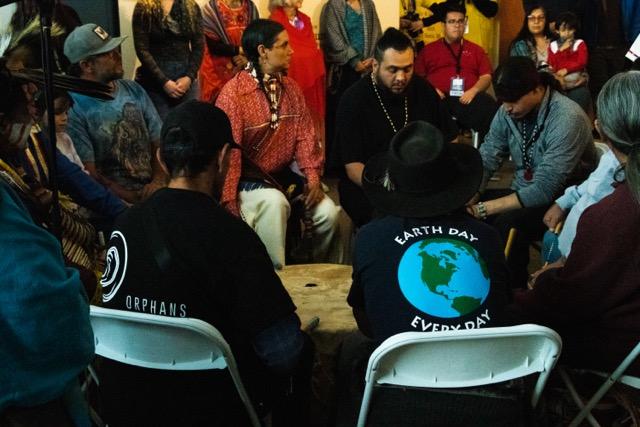
Award-winning theoretical physicist Sylvester James Gates, Jr. spoke at CSU-Pueblo’s Hoag Recital Hall March 12.
His lecture, which was entitled “At the Boundary of Modern Science: Where I Find Myself,” was sponsored by the CSU-Pueblo college of science and mathematics, the office of student services and enrollment management and the PROPEL center.
Gates was awarded the National Medal of Science in 2013 for his contributions to the science, technology, engineering and mathematics fields. In 2009, he was the first person to receive the American Physical Society’s Edward A. Bouchet Award.
He currently serves on President Obama’s Council of Advisors on Science and Technology and is a board member of trustees of Society for Science and the Public. He is also a member of the National Academy of Sciences.
The purpose of Gates’ visit was to discuss the impact of STEM in education and the community. His lecture focused on the importance of advancements in the STEM fields, focusing primarily on physics. He also correlated these advancements to his own experiences as a physicist.
In his lecture, he said “a series of accidents,” led him to become a physicist.
He said his parents were very instrumental in encouraging his education. His father gave him an Encyclopedia Britannica set when he was eight. Inside the encyclopedia, he said he found a set of mathematical equations that seemed to captivate him.
He knew at age 14 that he wanted to attend the Massachusetts Institute of Technology after learning about it on a television program. When he was 19, he applied to MIT and was accepted, he said.
In 1973, Gates graduated from MIT with bachelor’s degrees in mathematics and physics. He was the first in his family to attend college, making him a first generation student. After earning his degrees, Gates continued to work toward a doctorate at MIT.
While on course for his doctorate degree, he stumbled upon the concept of supersymmetry, which deals with calculating the behavior of elementary particles to understand the behavior of symmetry in matter.
Gates was the first at MIT to work with supersymmetry. In 1977, he presented his first thesis on the subject “Symmetry Principles in Selected Problems of Field Theory.” Since his original thesis, his work with supersymmetry has helped physicist develop a better understanding of time and space.
He has made multiple appearances on TV programs about physics, including those on PBS’ Nova and BBC Horizon. His most notable appearance is on the 2003 PBS series “The Elegant Universe.” In addition to appearances, Gates also created a DVD series entitled “Superstring Theory: The DNA of Reality.” This series was designed to help everyday people understand the complex theories of unification. He will appear in Nova’s “Big Bang Machine,” later this year.
In his lecture Gates shared his scientific “Bucket List,” which consisted of theories he hoped to see come to life in his lifetime. Originally included on the list was the Higgs Boson, which was discovered in 2012 at the Laboratory of Atmospherics Chemistry located at CERN laboratory in Switzerland.
To provide context for the theories in his bucket list, Gates presented a series of scientific laws and principles relevant to bringing the theories to life, including several equations. He discussed the need for changes to certain equations to understand the theories’ principles. Gates used Albert Einstein’s in theoretical physics as an example.
He also likened the expansion of understanding mathematics to the evolution of music. Through altering calculations, mathematicians are able to raise new questions that were previously not thought of.
“Math is more than just symbols and numbers,” he said. It gives mathematicians,” that extra ability to sense the universe.” The ability for a mathematician to find a new approach at mathematics is similar to a musician finding his or her own voice, he said.
Gates also discussed the importance of the STEM fields to the world around us, as our society is becoming more technologically advanced.
Inventions like radio, television, the Internet, and cell phones have benefited our world greatly, but he said many do not think about how these things came to exist. “Media and society do not pay attention to the scientist behind (these things),” he said.
“Scientists are not in the business of making headlines. Science is what drives the scientist,” Gates said.









